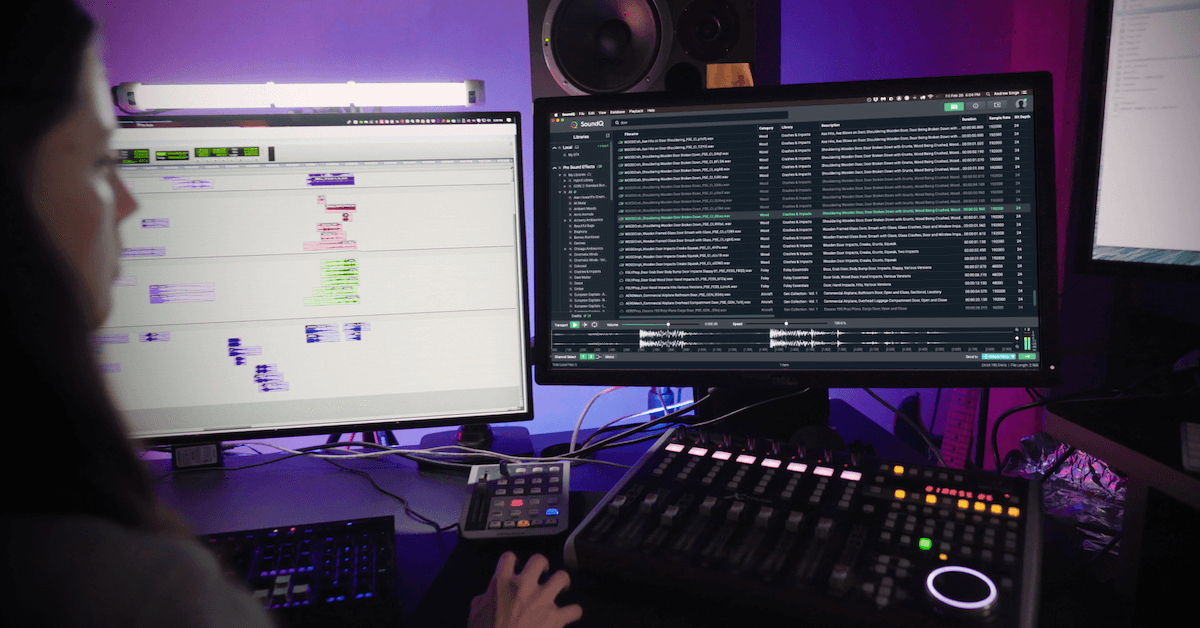Learn how to structure your sound effects library for speed and efficiency - so you can stay focused and in the creative zone.
I’ve seen a lot of sound effects collections at various studios over the years. And unless the studio has a dedicated librarian, these databases are often extremely messy and unorganized. Perhaps a visit from the sound design equivalent of Marie Kondo would be a great solution (if such a person exists).
Library management can be tedious, but it’s important work – it can be the difference between finding that perfect sound vs. settling for something mediocre that just gets the job done. Here are a few tips that have helped me keep my sound effects libraries organized over the years.
1. Think about folder structure when first downloading or transferring libraries.
When you’re downloading or transferring a library, this is your first opportunity to do things the right way! Don’t let a library sit in your downloads folder - go ahead and add it to your sound effects drive. I like for the root of my sound effects drive to contain a folder for each publisher/designer. e.g:
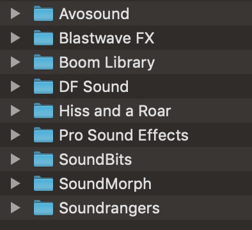
Within each publisher/designer folder, there’s a single folder for each library:
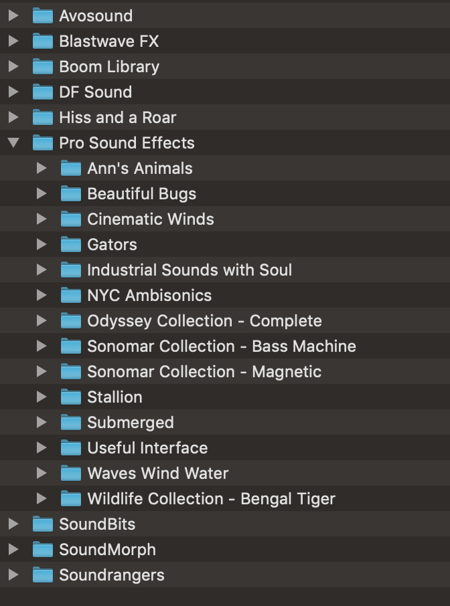
If a library you purchase comes in multiple .zip files, go ahead and unzip, combine the folders, and delete the .zip files to save on hard drive space! If you don’t have time to do this in the moment, put the library in a “To Import” queue folder, so you know where to go when you do have time to get organized.
Having a clean folder structure not only looks better, but it also makes it easier to browse your sound effects library by folder in software like SoundQ, whether or not the library comes with any metadata.
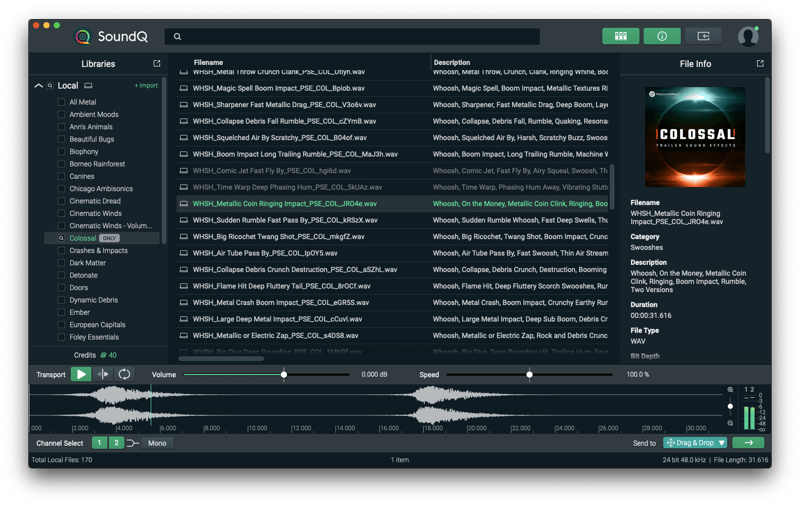
2. If a library doesn’t have description metadata, add it as soon as possible.
This is a tough one to do consistently as it can be quite time-consuming, but it’s a critical step for making sure that you actually find the sounds that you need and make the most of your library purchases.
I do my best to listen through every sound of a library when I download them. At this point, I will add or modify the descriptions to suit my needs. We all have our own language for describing sounds. Make them your own so you will find them in the future. The more colorful the language the better. Sound effects editing can feel like a game of memory at times...make it easier on yourself!

3. Assign a category to allow browsing by category.
While listening through libraries for the first time, I will also add or modify the category metadata to fit my category system. I use the Universal Category System – a newly introduced category standardization that has greatly improved overall organization and saved time as a result.
While I typically go straight to the search bar when looking for sounds, browsing by category is very powerful. When browsing you don’t need to get the descriptors exactly right, so you’ll see sounds that you otherwise wouldn’t have returned in a standard search result.
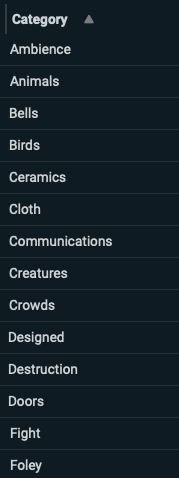
Category metadata can be edited in SoundQ - our new sound library software. Are you noticing a trend here? You need some kind of software to properly manage your libraries...
4. Use Library Management Software!
While a lot of editors may be able to get by browsing sounds in macOS Finder, if you really want to get organized you will need some kind of dedicated software for this task. There are many software solutions out there at various price points, but here are some features to consider:
- Metadata Editing: Make sure your sound effects library management software allows for metadata editorial as described above.
- Browsing by folder/category: Effective browsing is critical for the sound editor and can be a great alternative to a standard boolean search.
- Multiple Databases: Most software solutions offer the option to drag and drop sounds into a database, then allow the user to create multiple databases. This is very useful for quickly switching between a primary sound effects database, and a database of production recordings from a film or TV show, for instance. You might also want to create a work database that you use for quickly auditioning sounds so you don’t muddy up your primary database.
- Export Options: Is there a shortcut to spot the selected sound to the timeline of your DAW or NLE? This can be a HUGE benefit to your workflow and will help you stay in the creative zone.
- Multichannel Support: Do you need to manage surround or poly WAV files? Make sure your software supports these types of files.
SoundQ is our free sound library software that helps creators deliver better sound on every project, faster than ever. Download SoundQ now to see for yourself!


